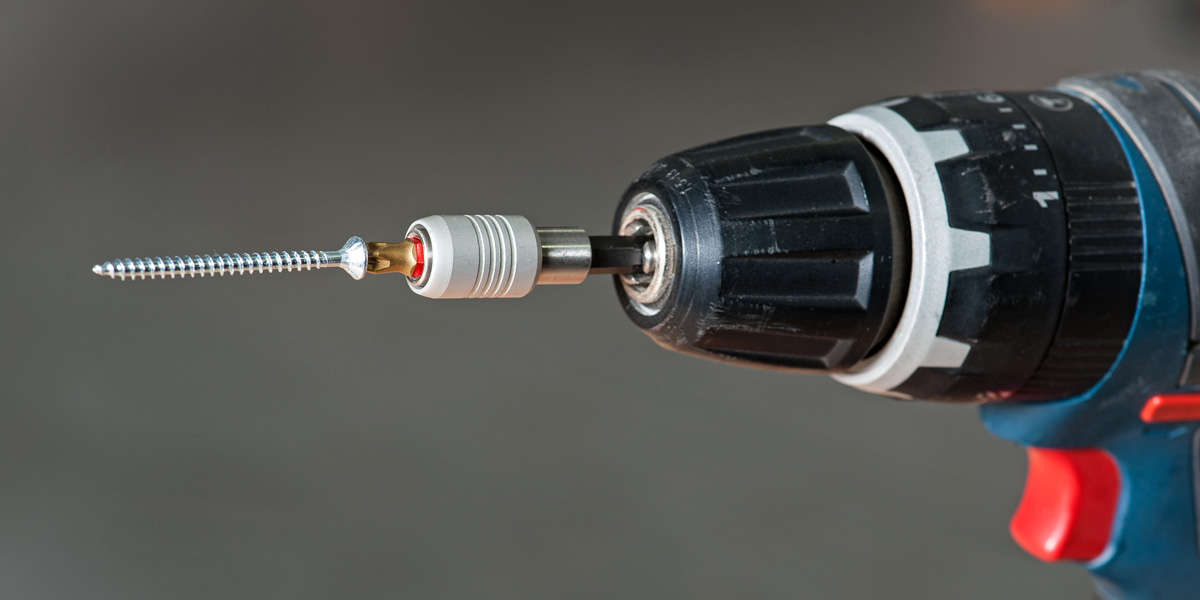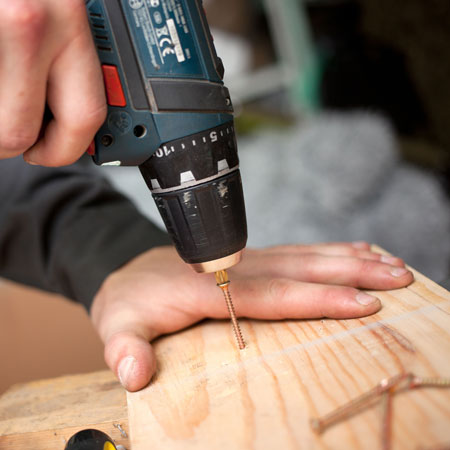Do you ever wonder if you can use screwdriver bits in a drill? Well, you’re in the right place to find out!
Have you ever found yourself in a situation where you needed a drill, but all you had were screwdriver bits? Don’t worry, we’ve got the answers you need.
Using the right tools for the job is important, but sometimes improvisation is necessary. So, let’s dive in and explore whether screwdriver bits can be used in a drill.

Can You Use Screwdriver Bits in a Drill?
Introduction: Screwdrivers and drills are both common tools that are used for various tasks around the house or in construction projects. It’s not uncommon for people to wonder if they can interchange the bits of these two tools. In this article, we will explore whether it is possible to use screwdriver bits in a drill and discuss the implications of doing so. We will also provide helpful tips and guidance for using these tools effectively and safely.
Can You Use Screwdriver Bits in a Drill?
When it comes to the question of whether you can use screwdriver bits in a drill, the answer is a resounding yes. In fact, many drills come with a keyless chuck that allows you to easily swap out bits, including screwdriver bits. This versatility makes drills a convenient and efficient tool for both drilling and screwing tasks. However, it’s important to note that not all drills are created equal, and some may not be suitable for use with screwdriver bits. It’s essential to check the specifications of your drill and ensure that it is compatible with screwdriver bits before attempting to use them.
There are a few key factors to consider when using screwdriver bits in a drill. Firstly, it’s important to ensure that the drill is set to the appropriate speed and torque setting for the task at hand. This will help prevent the bit from slipping or stripping the screw, and it will also ensure that the drill operates at its optimal efficiency. Additionally, using screwdriver bits in a drill requires a steady and controlled hand to avoid damaging the tool or the workpiece. Take your time, apply even pressure, and work at a comfortable pace to achieve the best results.
One of the main benefits of using screwdriver bits in a drill is the time and effort saved. With a drill, you can quickly and easily drive screws into various materials with less manual effort compared to using a traditional screwdriver. This is particularly advantageous when working on large projects or when there are numerous screws that need to be fastened. Moreover, using a drill allows for greater precision and control, especially when dealing with stubborn or hard-to-reach screws. Overall, using screwdriver bits in a drill can greatly enhance productivity and make your DIY or construction tasks much easier.
Choosing the Right Screwdriver Bits
Not all screwdriver bits are created equal, and it’s essential to choose the right ones for your specific needs. Here are some factors to consider when selecting screwdriver bits:
- Compatibility: Ensure that the screwdriver bits are compatible with your drill’s chuck size and type.
- Material: Different screwdriver bits are designed for use with different materials. Make sure to choose bits that are suitable for the type of screws and materials you will be working with.
- Sizes: Screwdriver bits come in various sizes, so select the ones that match the size of the screws you’ll be using.
- Quality: Invest in high-quality screwdriver bits as they are more durable and less likely to wear out or break during use.
By considering these factors, you can ensure that you have the right screwdriver bits for your specific drilling and screwing tasks, guaranteeing optimal performance and longevity.
Using Screwdriver Bits in a Drill: Tips and Best Practices
While using screwdriver bits in a drill is relatively straightforward, it’s important to follow some tips and best practices to ensure safety and success:
- Always wear appropriate safety gear, including safety glasses and gloves, when operating a drill.
- Secure the workpiece firmly in place to prevent movement or damage during drilling or screwing.
- Start with a pilot hole when drilling into wood or other delicate materials to prevent splitting or cracking.
- Choose the appropriate speed and torque setting on your drill based on the material and task at hand.
- Be mindful of the depth you’re drilling or screwing to avoid going too far and damaging the workpiece.
By following these tips and best practices, you can ensure safe and effective use of screwdriver bits in a drill for a wide range of tasks.
Common Frequently Asked Questions
Here are answers to some common questions that people often have about using screwdriver bits in a drill:
Key Takeaways: Can You Use Screwdriver Bits in a Drill?
- Yes, you can use screwdriver bits in a drill.
- Screwdriver bits are designed to fit into the chuck of a drill.
- Using screwdriver bits in a drill allows you to quickly and easily drive screws.
- Make sure to choose the right type and size of screwdriver bit for your project.
- Using screwdriver bits in a drill can save you time and effort when working on DIY projects.
Frequently Asked Questions
When it comes to using screwdriver bits in a drill, there are often doubts and confusion. To help clarify things, here are some frequently asked questions and their answers.
1. Can you use screwdriver bits in a drill?
Absolutely! Screwdriver bits can be used in a drill. Many drills come with a keyless chuck, which allows you to easily swap out drill bits for screwdriver bits and vice versa. Simply insert the screwdriver bit into the chuck like you would with a regular drill bit, tighten it in place, and you’re good to go. This versatility makes drills a handy tool for both drilling holes and driving screws.
However, it’s important to note that not all drill drivers are designed to handle screwdriver bits. Make sure to check the specifications of your drill to ensure that it is compatible with screwdriver bits. Additionally, using the right type and size of screwdriver bit for the job will enhance performance and prevent any potential damage to the drill or the fasteners you are working with.
2. What are the advantages of using screwdriver bits in a drill?
Using screwdriver bits in a drill offers several advantages. Firstly, it saves time and effort compared to manually using a screwdriver. The power of the drill allows you to drive screws quickly and efficiently, especially when working on larger projects or with tougher materials.
Additionally, using screwdriver bits in a drill provides better control and precision. With a drill, you can adjust the speed and torque settings to suit the specific screw and material you are working with, ensuring that you don’t overtighten or strip the screw head. This results in a more professional finish and reduces the likelihood of damaging the workpiece.
3. Can you use any screwdriver bit in any drill?
While most drills can accommodate various sizes and types of screwdriver bits, it’s essential to check the compatibility between the drill and the screwdriver bit you plan to use. The shank size and style of the screwdriver bit should match the chuck of the drill.
There are different types of chuck mechanisms, such as keyless chucks and hex chucks, each designed for specific types of bits. Make sure the screwdriver bit you intend to use is compatible with the type of chuck your drill has. Some drills may require an adaptor to use certain screwdriver bits, so it’s always best to consult the drill’s user manual or manufacturer guidelines for compatibility information.
4. What are some common types of screwdriver bits?
There are various types of screwdriver bits available, each designed for specific applications. Some common types include Phillips (cross-head), Flathead (slotted), Hex, Torx, and Square. Each type of screwdriver bit has a unique shape and profile that corresponds to a specific screw head shape.
It’s essential to choose the right type of screwdriver bit for the job to ensure a proper fit between the bit and the screw head. Using the correct screwdriver bit minimizes the risk of slipping or stripping the screw head, and ensures efficient and effective screw driving.
5. Can you use a drill with screwdriver bits for any material?
Drills with screwdriver bits can be used for a wide range of materials, including wood, plastic, and metal. However, it’s important to consider the hardness and thickness of the material you are working with.
For softer materials like wood or plastic, lower drill speeds and torque settings are generally sufficient. When working with harder materials like metal, you may need to increase the drill speed and use higher torque settings to drive the screws effectively. Always start with a lower setting and gradually increase the speed and torque as needed, while being mindful not to overpower the material.

How To Use a Screwdriver Bits With Drill (Correctly)
Summary
You might have wondered if you can use screwdriver bits in a drill. The answer is yes, but it’s not always the best idea. While it can work, using screwdriver bits in a drill can be less efficient and might not give you the best results.
Drill bits are specifically designed for drilling into different materials and have a different shape and design than screwdriver bits. Using the right tool for the job can make your work easier and give you better outcomes. So, it’s generally recommended to use drill bits in a drill for drilling tasks and reserve screwdriver bits for driving screws.
Remember, it’s always important to prioritize safety and use tools as they are meant to be used. So, the next time you’re working on a project, make sure to choose the appropriate tools for the task at hand.
